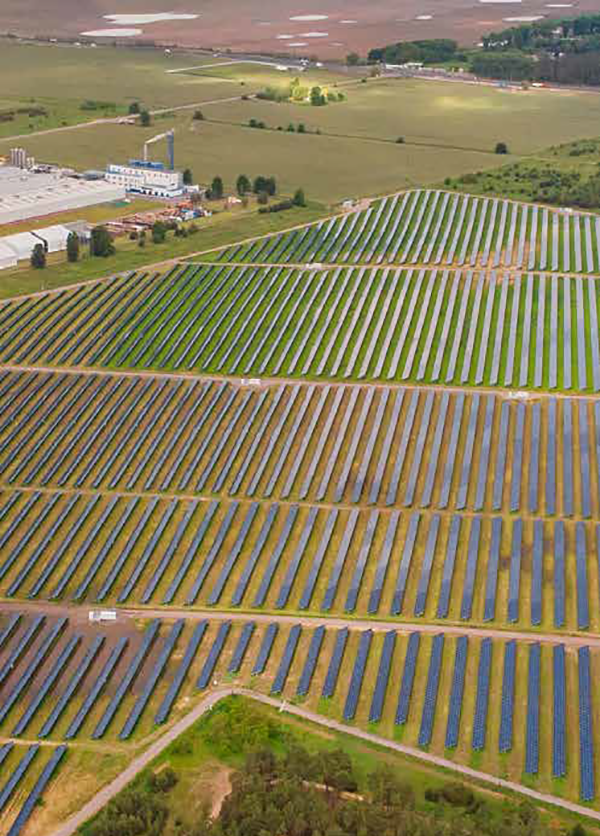The coast-to-coast agrivoltaic research projects will improve economic opportunities for farmers and reduce barriers to solar adoption in rural communities.
The commitment to the green transition shown by all countries worldwide demonstrates the importance of contributing to the fight against climate change.
Grant for environmental pact
One of the leading countries involved is the United States. With the announcement of an $8 million grant from the Department of Energy for six solar energy research projects in six states and the District of Columbia from the Department of Energy, the U.S. environmental pact is confirmed.
Social contribution
The award of these projects is helping the environment. It will bring a significant social contribution since the DOE will offer new economic opportunities to farmers rural communities, and the solar industry.
Agrivoltaics
Agrivoltaics is the co-location of agricultural production and solar energy generation on the same land. Funding for these programs will reduce barriers to utility and community-scale solar deployment while maximizing benefits to farmers and local communities.
Solar access
The Biden-Harris Administration has been known for its commitment to a clean energy future. In addition to ensuring that the benefits of increased solar access are realized for all communities. This solar access to meet the President’s goals of decarbonizing the electricity sector by 2035 and achieving a net-zero emissions economy by 2050.
Jennifer M. Granholm, U.S. Secretary of Energy, said: “DOE’s research into agrivoltaics provides an incredible opportunity to pair solar energy generation with safe and robust crop production. And ensuring rural communities reap the full economic benefits of a clean energy future. With these exciting projects, we’re supporting sustainable agriculture and investing in the technologies that enable us to make our climate goals a reality—a win-win for our planet and hardworking farmers coast to coast.”
Ecological benefits
The National Renewable Energy Laboratory presented a report highlighting the agricultural and ecological benefits of improved agrivoltaic practices. These practices are characterized by crop production, livestock grazing, or pollinator habitat under solar panels. The United States has only 2% of such projects, which is why the Foundational Agrivoltaic Research for Megawatt Scale (FARMS) funding program is essential.
The six projects selected for FARMS will examine different design configurations of solar systems, crops, and farming methods under foreign soil and environmental conditions. The researchers aim to develop resources to disseminate the best agrovoltaic practices to farmers and communities.
There will be six states and six projects benefiting from the DOE award:
- The first is Iowa State University (Ames, IA). Here they will study horticulture and beekeeping at solar sites. The amount to this program will be $1.6 million.
- Rutgers University (Piscataway, NJ) will also have an amount of $1.6 million. This program will conduct grazing crop trials on two solar panel test beds, document community perceptions of agrivoltaics, and create a regional agrivoltaics network for agricultural extension personnel in the Northeast.
- The third grantee will be the Solar and Storage Industries Institute (Washington, D.C.) program. They will partner with the agricultural and utility sectors to identify barriers to agri- voltaic deployment and develop case studies and guides for solar developers, farmers, and decision-makers. The award for this project will be $500,000.
- The Ohio State University (Columbus, OH) will conduct grass and forage (hay) production trials using precision agriculture technologies and will also study the impact on the soil health of a working solar site. They will be awarded a $1.8 million grant.
- With $1.3 million, the University of Alaska Fairbanks (Fairbanks, AK) will research agrivoltaics specifically tailored to underserved communities’ food and energy needs in high latitudes.
- Finally, the University of Arizona (Tucson, AZ) will receive a $1.2 million grant. This to maximize energy, food, and water benefits in the arid Southwest. By testing climate-smart grazing and agriculture on a traditional solar site.
These investments will promote diversity, equity, and inclusion. Supporting President Biden’s Justice40 Initiative to ensure that the clean agrivoltaic energy economy benefits all Americans. Especially those in underserved and underrepresented communities.
Collaboration between farmers, rural communities, and the solar industry
The six programs will conduct intensive outreach and collaboration with regional rural and agricultural communities. Including Hispanic, tribal, and immigrant farmers. DOE intends to enable greater collaboration. Between farmers, rural communities, and the solar industry through these projects and their awardees with large extension networks. These investments will promote diversity, equity, and inclusion. Supporting President Biden’s Justice40 Initiative to ensure that the clean energy economy benefits all Americans. Especially those in underserved and underrepresented communities.
It can be of your interest: January 2023 – The ESG’s impact around the world for the ecological transition


